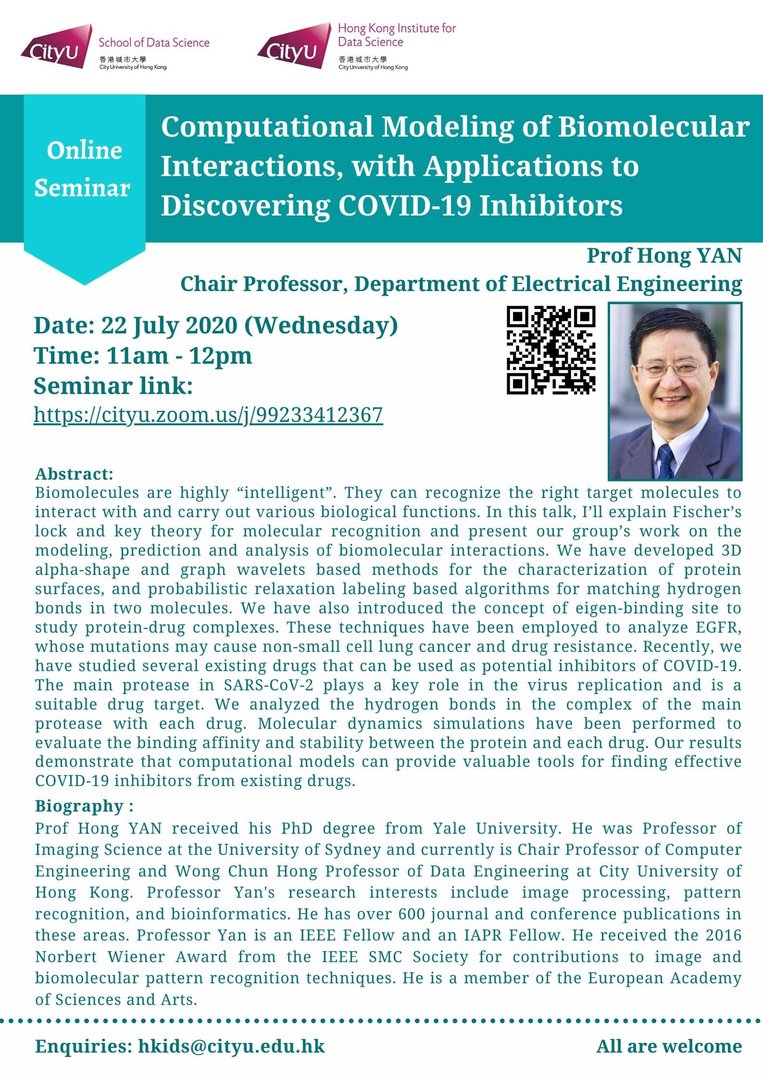
Biomolecules are highly "intelligent". They can recognize the right target molecules to interact with and carry out various biological functions. In this talk, I'll explain Fischer's lock and key theory for molecular recognition and present our group's work on the modeling, prediction and analysis of biomolecular interactions. We have developed 3D alpha-shape and graph wavelets based methods for the characterization of pr otein surfaces, and proba bilistic relaxation labeling based algorithms for matching hydrogen bonds in two molecules. We have also introduced the concept of eigen-binding site to study protein-drug complexes. These techniques have been employed to analyze EGFR, whose mutations may cause non-small cell lung cancer and drug resistance. Recently, we have studied several existing drugs that can be used as potential inhibitors of COVID-19. The main protease in SARS-CoV-2 plays a key role in the virus replication and is a suitable drug target. We analyzed the hydrogen bonds in the complex of the main protease with each drug. Molecular dynamics simulations have been performed to evaluate the binding affinity and stability between the protein and each drug. Our results demonstrate that computational models can provide valuable tools for finding effective COVID-19 inhibitors from existing drugs.
Speaker: Professor Hong YAN
Date: 22 July 2020 (Wed)
Time: 11:00am - 12:00pm
Poster: Click here
Latest Seminar
Biography
Prof Hong YAN received his PhD degree from Yale University. He was Professor of Imaging Science at the University of Sydney and currently is Chair Professor of Computer Engineering and Wong Chun Hong Professor of Data Engineering at City University of Hong Kong. Professor Yan's research interests include image processing, pattern recognition, and bioinformatics . He has over 600 jour nal and conference publications in these areas. Prof essor Yan is an IEEE Fellow and an IAPR Fellow. He received the 2016 Norbert Wiener Award from the IEEE SMC Society for contributions to image and biomolecular pattern recognition techniques. He is a member of the European Academy of Sciences and Arts.